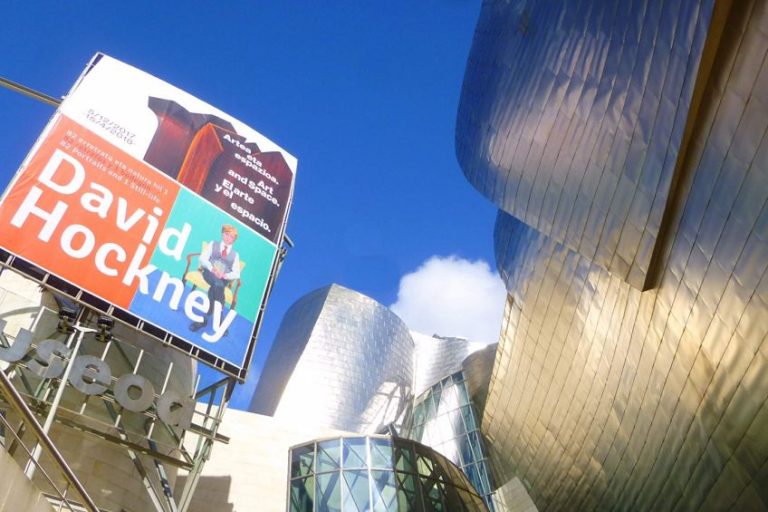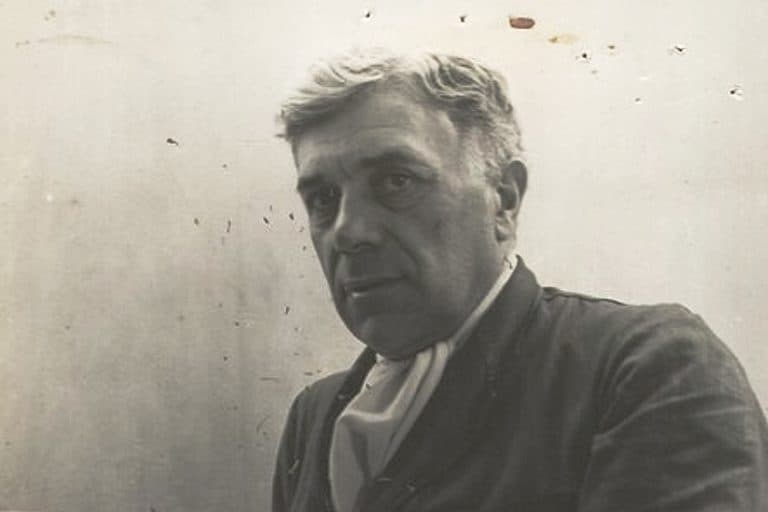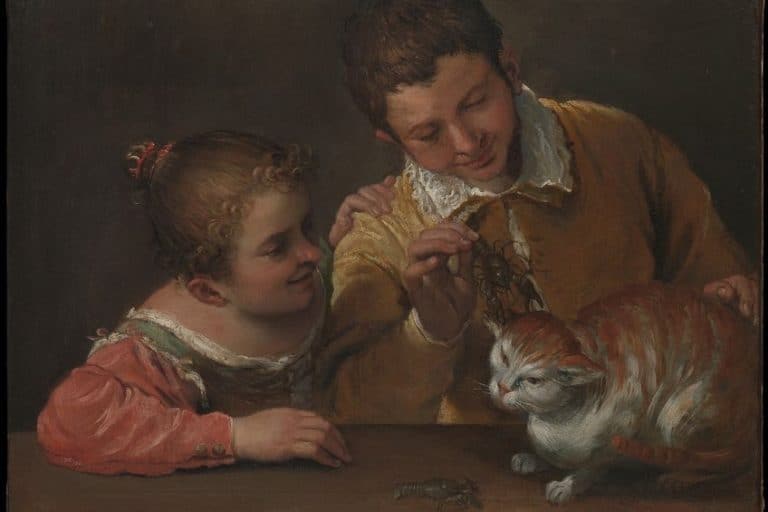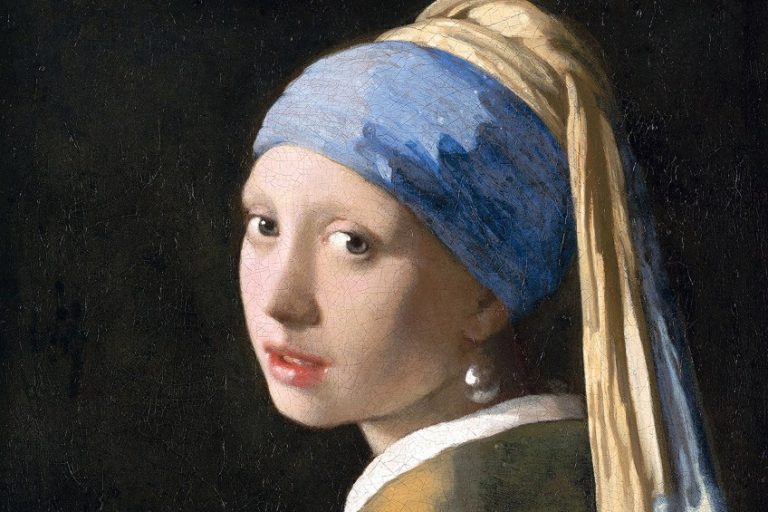“The Temptation of St Anthony” by Hieronymus Bosch – An Analysis
The famous triptych painting, The Temptation of St Anthony, by Hieronymus Bosch will leave you dissecting it for hours. You will meet a creature protruding from almost every opening that is part of a visual story weaving its way into all parts of the canvas. Read more about the artwork in the article below.
Artist Abstract: Who Was Hieronymus Bosch?
Hieronymus Bosch, who was Jheronimus van Aken, was born in ‘s-Hertogenbosch, the Netherlands. His date of birth has been estimated around the 1450s and his date of death on August 9, 1516. While the information about his life is not extensive, it is believed that the artist learned to paint from his father, whose workshop he reportedly worked in. He was also part of the confraternity group called Brotherhood of Our Lady. His artworks are characterized as detailed with themes ranging from religion to the surreal. Some of his famous paintings include The Last Judgment (c. 1482 – 1505), The Adoration of the Magi (c. 1494), and The Garden of Earthly Delights (c. 1490 – 1510).
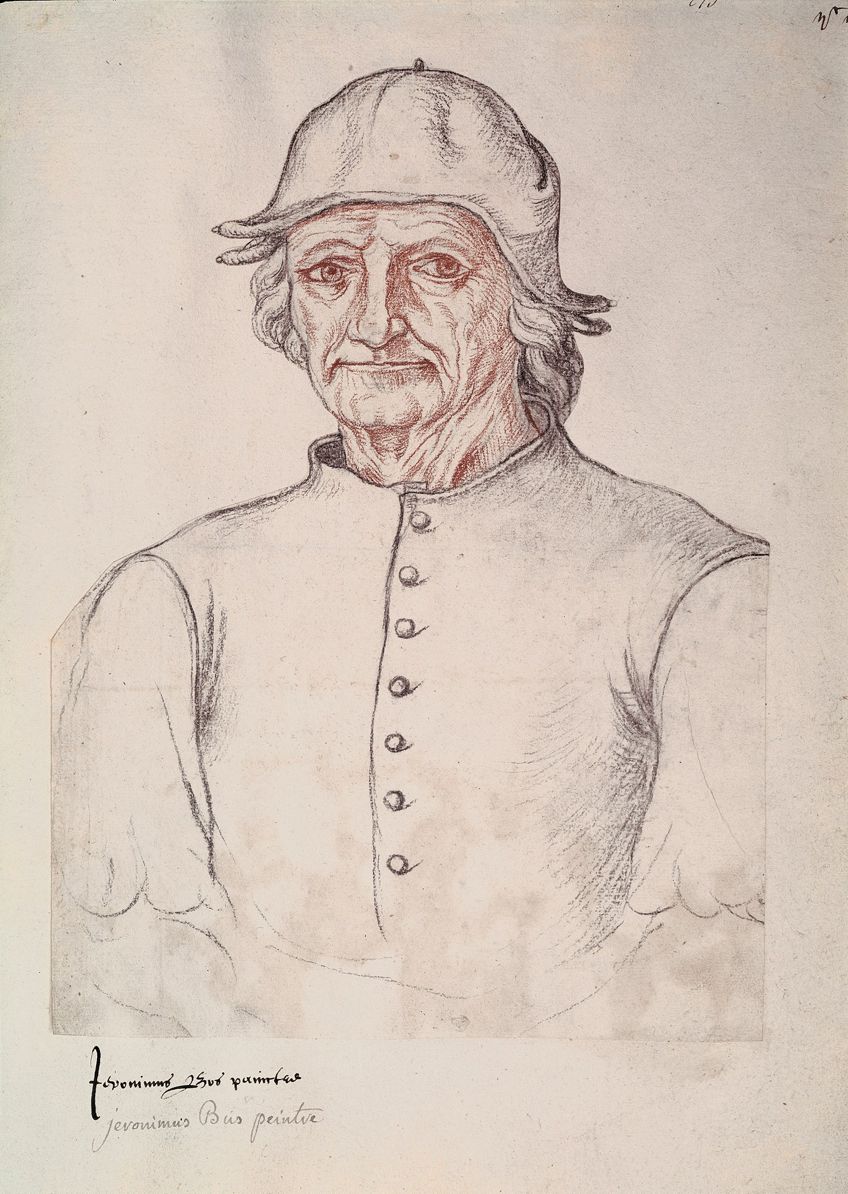
The Temptation of St Anthony (c. 1500 – 1510) by Hieronymus Bosch in Context
| Artist | Hieronymus Bosch (c.1450s – 1516) |
| Date Painted | c. 1500 – 1510 |
| Medium | Oil on wooden panels |
| Genre | Religious painting |
| Period/Movement | Renaissance/Early Netherlandish |
| Dimensions (meters) | 131.5 x 119 (central panel) 131.5 x 53 (side panels) |
| Series/Versions | N/A |
| Where Is It Housed? | Museu Nacional de Arte Antiga, Lisbon, Portugal |
| What It Is Worth | Uncertain |
The analysis below will discuss the famous triptych painting titled The Temptation of St Anthony by Hieronymus Bosch. It will cover key points around what is depicted and who the narrative is about. A formal analysis will also discuss the subject matter of the composition and how the elements of art are utilized.
Contextual Analysis: A Brief Socio-Historical Overview
The Temptation of St Anthony by Hieronymus Bosch tells a visual tale about the Christian monk known as Saint Anthony from Egypt or Saint Anthony the Great. He was known for living as a hermit in the desert for over a decade and was accosted by numerous demons and temptations, which are depicted in Bosch’s famous triptych painting. Saint Anthony’s temptations were common subject matter for artworks during the middle ages.
Reportedly, the inspiration for Saint Anthony’s story originated from the writings about him in the text by Athanasius of Alexandria titled The Life of Anthony (c. 360 AD).
Formal Analysis: A Brief Compositional Overview
The formal analysis of The Temptation of St Anthony by Hieronymus Bosch will provide brief visual descriptions of the three panels from this famous triptych painting and will then describe how the art elements (color, texture, line, shape, form, and space) are applied and how these compose the painting.

Subject Matter: Visual Description
The Temptation of St Anthony by Hieronymus Bosch is a triptych painting, which simply means it consists of three panels, which are usually attached by hinges, or they can be free-standing. One of the main purposes for triptychs throughout history has been for altarpieces.
Below you will read more about the three, open, panels that make up Hieronymus Bosch’s famous triptych painting, starting with the left, central, and right panels, and lastly the closed outer panels.
Left Panel: The Flight and Fall of Saint Anthony
The left panel of The Temptation of St Anthony by Hieronymus Bosch depicts a myriad of creatures and humans alike. Some of the main figures presented here, starting in the foreground, are Saint Anthony, in an unconscious state, being supported and carried by three men, of which two appear to be monks and the other a layman. They are walking over a wooden bridge towards the right side of the composition which leads onto a ground pathway moving out of our, the viewers’, sight.
However, slightly above this pathway, are three more figures entering the compositional scene. They appear cloaked and a mix between animal and human. The one figure has been described as a reindeer and he is wearing a red cloak revealing his head and antlers.
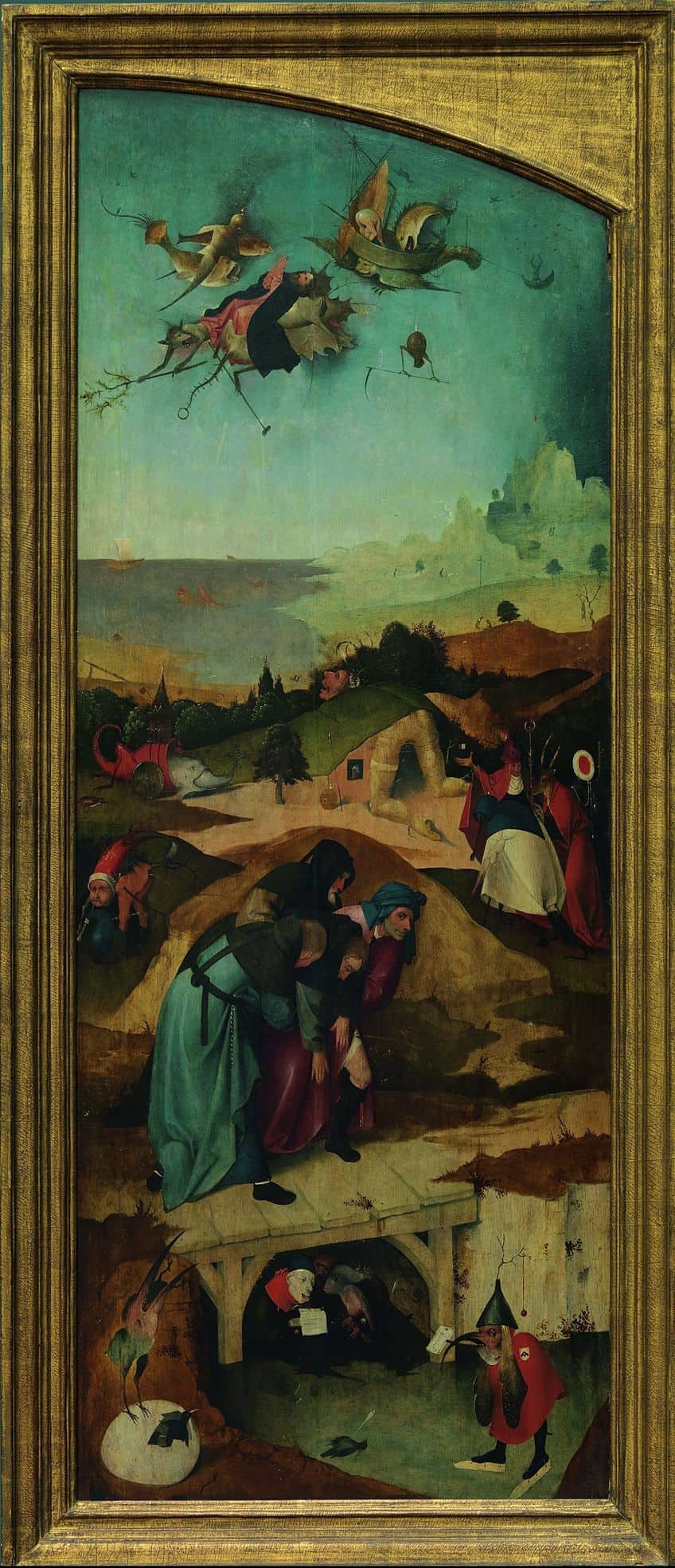
The other figure appears bird-like and it has a hooded head. It has a long, thin, black beak-like protrusion from its face and what appears to be wings and a feathered tail showing through its cloak. The third figure appears to be human and wears a red cloak and a mitre on his head. He seems to be gesturing with his extended right arm and hand and conversing with the other two figures. Above these figures, to the right middleground, is a cave that is created and stabilized by what appears to be a giant figure who is on all fours, with its exposed buttocks and anus facing us, the viewers.
The gap between its legs reveals the cave’s opening and a closed gateway where a figure’s face is on the inside looking out. To the left of this is a small square window where another figure is visible inside and looking out.
Over this giant’s back is a strip of green, which resembles the hill’s grass, and its head can be seen on the other side. It appears to be moaning or screaming and there is an arrow through the front of its head. The background, and the upper edge of the composition, consists of aquatic and amphibian creatures flying in the sky and the figure of Saint Anthony is lying on his back on what appears to be a frog-like creature with splayed wings that is also on its back.
Central Panel: The Temptations
The central panel of The Temptation of St Anthony by Hieronymus Bosch depicts Saint Anthony as the central figure. He is in a kneeling position and his face is turned towards us, the viewers. There are several buildings around him and an assortment of human and animal figures, and some appear as hybrids of the two.
Saint Anthony and the surrounding figures are on a platform that appears to be part of a destroyed tower. This reveals a room inside with a man standing by an altar with a crucifix and candle on it. This tower is also connected to another building that appears egg-shaped in its construction with a dome-like top where smoke rises out of it. There appears to be a connecting sky bridge-type structure between both buildings.

There appears to be land and water in the direct foreground. Strange and surrealistic creatures float on the water, and to the left is a life-size fruit-like object that is broken open, and emerging out of it are several, even stranger, creatures.
The background consists of several houses, possibly a small town, which is set on fire in the far distance, but there are still some houses unharmed. There are more figures of horses crossing a bridge in the background, slightly on the outskirts of the town.
While the upper left portion of the composition is black and orange from the raging fire’s smoke coursing ever upwards, some flying figures are still evident.
For example, a thin whitish figure on a fish and a figure in the far distance flying with what appears to be a ladder. The upper right portion of the composition is a blue and white color, which reveals an open sky. There is a body of water, possibly part of the ocean, underneath and a hillside in the far distance. In the sky are two large flying ships, although the one on the left appears half-bird, half-boat.
Right Panel: The Contemplation of Saint Anthony
Looking at the right panel of The Temptation of St Anthony by Hieronymus Bosch, depicts Saint Anthony in the foreground, sitting, somewhat hunched over, on a rock with a book in his hand, which is thought to be the Bible.
Saint Anthony’s face is turned to the right, towards us, the viewers, as if he is looking away from the temptation in front of him. There is a tree trunk with a split down its center and a naked woman standing in the opening, in front of Saint Anthony.
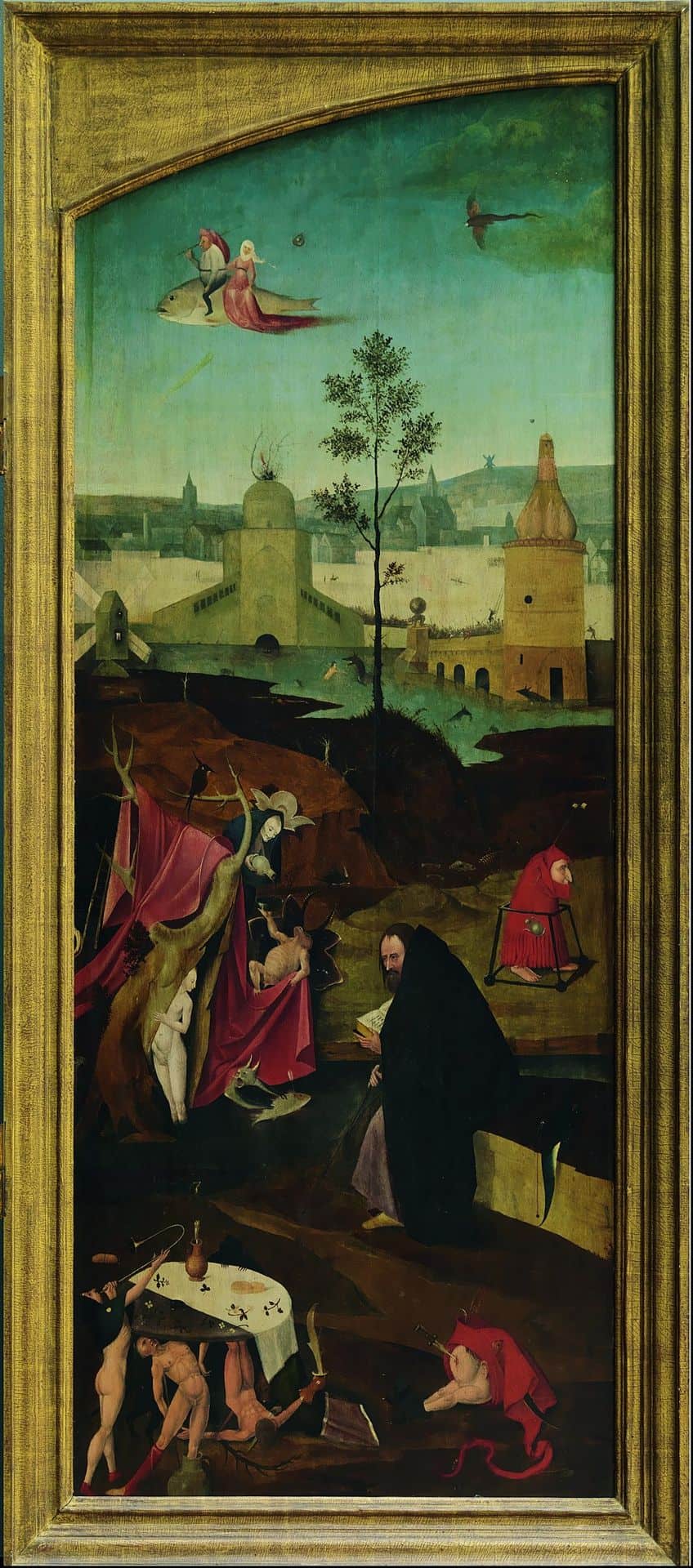
She appears to be facing Saint Anthony. There is red fabric draped over the tree as if covering it, and an amphibian-like creature is to the tree’s left holding on to part of the fabric so that it does not fall back to cover the opening where the woman is standing.
In the immediate foreground are more creatures, in the bottom left corner is a round table-like object with three more naked figures, two seem to hold the table up and one is standing with a thin trumpet-like instrument in its hands. In the lower right corner is another creature with a red piece of fabric over it and what appears to be a knife in what appears to be a distended belly or possibly another body part.
The background consists of several buildings and what appears to be a town by part of the ocean. There is a windmill to the left and in the sky is a man and woman sitting on a flying fish.
Closed Outer Panels: The Life of Christ
The outer panels of The Temptation of St Anthony by Hieronymus Bosch are made of grisaille with more subdued, monochrome, colors compared to the inner paintings. The two paintings depict two scenes from Jesus Christ’s life, namely The Arrest of Christ on the left and Christ Carrying the Cross on the right.
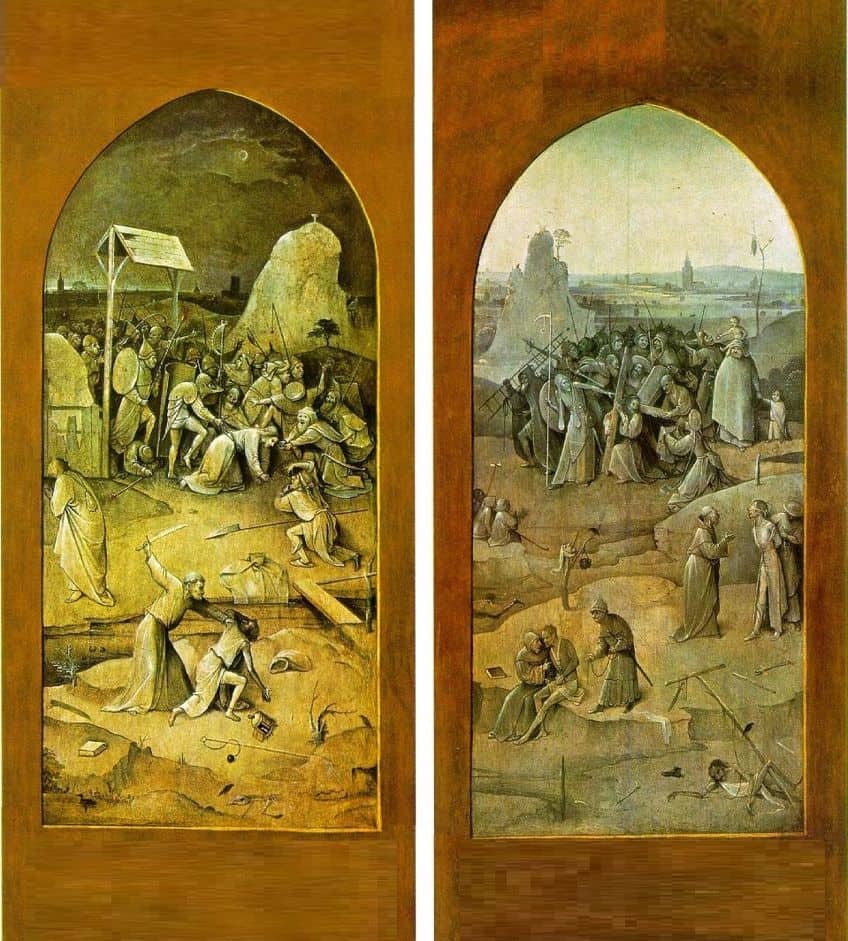
The Arrest of Christ depicts Christ on his knees surrounded by soldiers and in the foreground is the figure Malchus, whose ear is being cut off by the Apostle Simon Peter. Christ Carrying the Cross depicts Jesus Christ in the background and several other figures surrounding Him.
Texture
There is implied and tactile texture in Hieronymus Bosch’s The Temptation of St Anthony. Some of the implied textures include the softer folds of the fabrics, the harder surfaces of the buildings and wooden bridge, the smooth textures of the creatures and other objects like the egg in the lower left corner of the left panel or the softer fruit-like object in the central panel.
The tactile textures of the paintbrush appear smooth and somewhat coarser in some areas; however, Bosch’s brushstrokes create a clearly defined subject matter throughout the three panels.
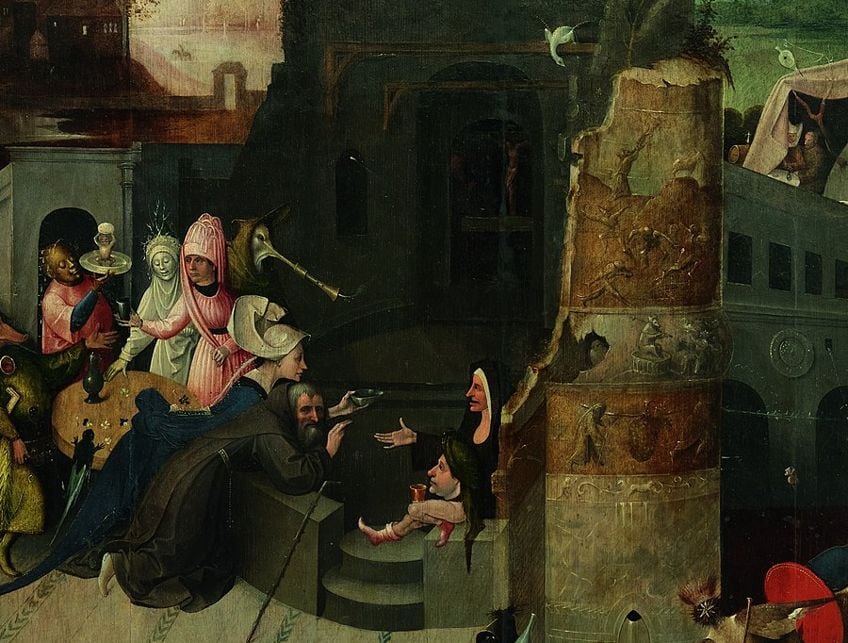
Color
Some of the main pigments utilized in The Temptation of St Anthony by Hieronymus Bosch consist of lead white, lead-tin yellow, azurite, and malachite. Bosch utilized a beautiful and radiant spectrum of colors to create lively and dramatic scenes, which was a characteristic of his artworks.

Shape and Form
The Temptation of St Anthony by Hieronymus Bosch consists dominantly of naturalistic, irregular, shapes and forms, in other words, it’s not completely geometric or abstract. However, some geometric shapes occur in the architectural structures in the central panel.
For example, the platform with a half circle, the circular shape of the tower, or the oval shape of the building next to the tower.

Line
There are a variety of lines in The Temptation of St Anthony by Hieronymus Bosch, all of which create dynamism and movement throughout the composition. Some lines are curved and rounded which delineates the figures while other lines delineate the more angular shapes of the bridge and buildings.

Space
The compositional space in The Temptation of St Anthony by Hieronymus Bosch is filled with figures and objects that create movement and allows our, the viewers’, gaze to wander all over the canvas. Bosch created a sense of depth through techniques like perspective and scale, blurring and diminishing the size of the subject matter in the distance.
Notice the hazy view in the far distance.
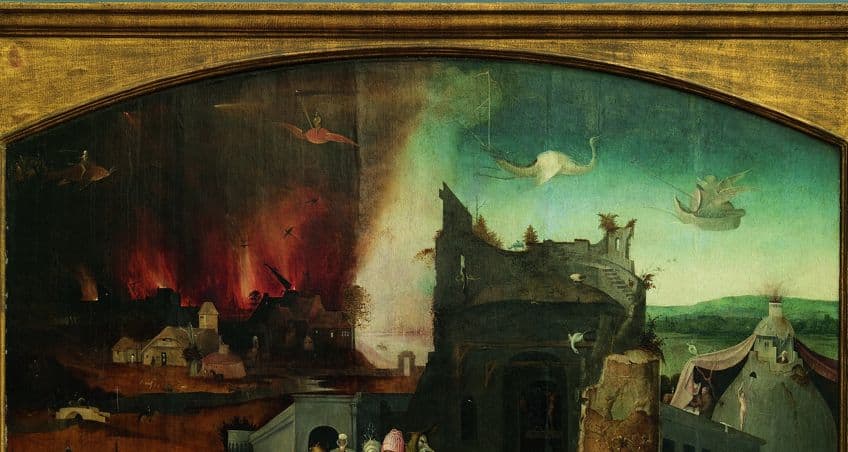
A Boschian World Awaits
Hieronymus Bosch created stunning paintings that featured creatures seemingly from a whole other universe altogether. The artist became popular for his depictions of hybrids, whether these were amphibian, aquatic, avian, or human. Bosch also influenced numerous artists, notably the famous Surrealist Salvador Dalí, in fact, Bosch has been dubbed as a “forefather” of Surrealism. While this article only touched on the triptych titled The Temptation of St Anthony by Hieronymus Bosch, you are encouraged to dive deeper into the vast and strange Boschian world that awaits.
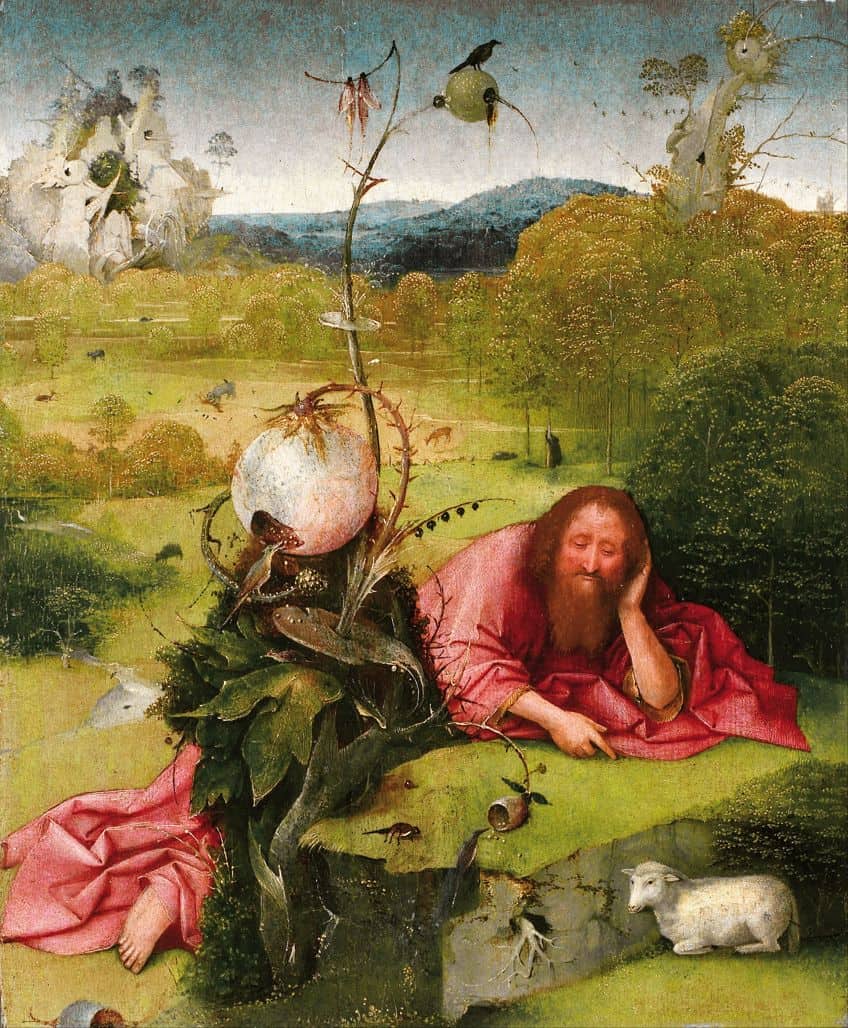
There will be monsters, demons, hybrids, humans, and possibly other creatures unbeknownst to us but, what we do know is that Hieronymus Bosch was a leading artist for his time. He did not shy away from sharing symbolic subject matter that undoubtedly would have brought awe and shock to his audience, making his unforgettable mark on the art world to this day.
Frequently Asked Questions
Did Bosch Paint The Temptation of St Anthony?
There are numerous depictions of the story about the temptation of Saint Anthony, and it is a common occurring theme in art. While Hieronymus Bosch did paint The Temptation of St Anthony (c. 1500 – 1510), other artists like the Surrealist Salvador Dalí also painted an iteration of it, titled The Temptation of St. Anthony (1946).
Where Is The Temptation of St Anthony by Hieronymus Bosch Located?
The Temptation of St Anthony (c. 1500 – 1510) by Hieronymus Bosch is housed at the Museu Nacional de Arte Antiga in Lisbon, Portugal.
Who Was St Anthony in Hieronymus Bosch’s Triptych?
Saint Anthony was also known as Saint Anthony the Great or Saint Anthony from Egypt. He was known as the founder of Christian monasticism, and was also known for his travels into the desert where he lived in solitude for several years.
Alicia du Plessis is a multidisciplinary writer. She completed her Bachelor of Arts degree, majoring in Art History and Classical Civilization, as well as two Honors, namely, in Art History and Education and Development, at the University of KwaZulu-Natal, South Africa. For her main Honors project in Art History, she explored perceptions of the San Bushmen’s identity and the concept of the “Other”. She has also looked at the use of photography in art and how it has been used to portray people’s lives.
Alicia’s other areas of interest in Art History include the process of writing about Art History and how to analyze paintings. Some of her favorite art movements include Impressionism and German Expressionism. She is yet to complete her Masters in Art History (she would like to do this abroad in Europe) having given it some time to first develop more professional experience with the interest to one day lecture it too.
Alicia has been working for artincontext.com since 2021 as an author and art history expert. She has specialized in painting analysis and is covering most of our painting analysis.
Learn more about Alicia du Plessis and the Art in Context Team.
Cite this Article
Alicia, du Plessis, ““The Temptation of St Anthony” by Hieronymus Bosch – An Analysis.” Art in Context. September 7, 2023. URL: https://artincontext.org/the-temptation-of-st-anthony-by-hieronymus-bosch/
du Plessis, A. (2023, 7 September). “The Temptation of St Anthony” by Hieronymus Bosch – An Analysis. Art in Context. https://artincontext.org/the-temptation-of-st-anthony-by-hieronymus-bosch/
du Plessis, Alicia. ““The Temptation of St Anthony” by Hieronymus Bosch – An Analysis.” Art in Context, September 7, 2023. https://artincontext.org/the-temptation-of-st-anthony-by-hieronymus-bosch/.




